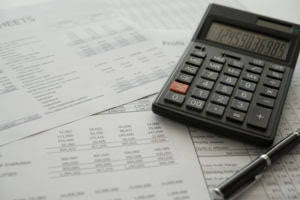What Are Chart of Accounts? How It Works, Setting up & Pros
Liability accounts provide a list of categories for all the debts that the business owes its creditors. Typically, liability accounts will include the word “payable” in their name and may include accounts payable, invoices payable, salaries payable, interest payable, etc. Traditionally, each account in the COA is numbered, and accountants can quickly identify its type by the first digit. For example, asset accounts for larger businesses are generally numbered 1000 to 1999 (or 100 to 199), and liabilities are generally numbered 2000 to 2999 (or 200 to 299).
Tip 2: Align business units
Therefore, while every COA uses the same building blocks – balance sheet and income statement accounts – how deep you delve into each of those blocks is up to you. Their chart of accounts (COA) would list out several sub-accounts under main categories like assets, liabilities, and shareholders’ equity. A well-structured chart of accounts (COA) facilitates precise financial reporting and enables organizations to make informed decisions.
- By the end of this blog, you’ll learn what a COA is, and how to set one up effectively.
- This categorization simplifies the preparation and analysis of financial statements, helping organizations track their financial health efficiently.
- Our partners cannot pay us to guarantee favorable reviews of their products or services.
- As your business grows, so will your need for accurate, fast, and legible reporting.
- There are five main account type categories that all transactions can fall into on a standard COA.
- This capability is crucial for maintaining the accuracy of the COA, as it ensures that all entries are correct and accounted for, minimizing discrepancies and errors that can arise from manual entry.
- Regular updates to the COA may be necessary to reflect changes in the business structure or accounting requirements.
Financial Statement
When everything is neatly categorised, it’s easier to track your income and expenses, see where your money is going, and make informed decisions. This structured approach allows for systematic recording and reporting, making it easier to track financial activity and prepare financial statements. Each account in this example can be further detailed or expanded based on the specific needs of the business, such as adding separate accounts for different types of services or inventory.
- Let’s look at the anatomy of the chart of accounts – what it comprises, why you need it, and what goes where within this framework.
- Those could then be broken down further into, e.g., current assets ( ) and current liabilities ( ).
- Even if you know that city fairly well, without a GPS or map to direct you, you’re either going to spend an awfully long time finding that address or not find it at all.
- The numbering follows the traditional format of the balance sheet by starting with the current assets, followed by the fixed assets.
- First, let’s look at how the chart of accounts and journal entries work together.
What is the best software for setting up and using a COA?
This coding system is important because the COA can display many line items for each transaction in every primary account. Every company is different so, depending on your operations, industry, and other critical factors, the template is only as good chart of accounts examples as you make it. Now, that said, we’d be remiss if we didn’t boast a bit and say that Embark’s COA template is a heckuva starting point. Imagine someone plops you down into the middle of a massive city and asks you to find a particular address.
Where’d you go to find equity?
Similar to a chart of accounts, an accounting template can give you a clear picture of your business’s financial information at a glance. Utilizing accounting tools like these will ensure a better workflow, helping you grow your company. FreshBooks offers a wide variety of accounting tools, like accounting software, that make it easier to stay organized. Most new owners start with one or two broad categories, like “sales” and “services.” While some types of income are easy and cheap to generate, others require considerable effort, time, and expense.
- Shmuel is Datarails’ Content Manager with a passion for simplifying finance for individuals and businesses.
- But just because it’s important doesn’t mean it’s intuitive or straightforward, at least without true expertise guiding the way.
- Without a chart of accounts, it’s impossible to know where your business’s money is.
- My Accounting Course is a world-class educational resource developed by experts to simplify accounting, finance, & investment analysis topics, so students and professionals can learn and propel their careers.
- Large and small companies use a COA to organize their finances and give interested parties, such as investors and shareholders, a clear view and understanding of their financial health.
Income Statement
And when it comes to audits (those thorough checks of financial records), having a clear COA makes everything a lot easier, keeping everyone happy and following the rules. Gains and losses represent the money earned or lost from activities outside the company’s primary operations. For example, gains from the sale of assets or investments or losses from currency exchange fluctuations. Separating gains and losses allows businesses to analyze the impact of these non-operating activities separately from core business operations. The chart of accounts deals with the five main categories, or, if you will, account types. Start with a simple COA structure that covers all the fundamental areas of your business finances but is also flexible enough to scale as your business grows.
You can get a handle on your necessary recurring expenses, like rent, utilities, and internet. You can also examine your other expenses and see where you may be able to cut down on costs if needed. Assets are resources your business owns that can be converted into cash and therefore have a monetary value.
A chart of accounts usually contains identification codes, names, and brief descriptions for each account to help users easily locate specific accounts. This coding system is crucial because a COA can display a multitude of line items for each transaction in every primary account. Some of the components of the owner’s equity accounts include common stock, preferred stock, and retained earnings. The numbering system of the owner’s equity account for a large company can continue from the liability accounts and start from 3000 to 3999.
This capability is crucial for maintaining the accuracy of the COA, as it ensures that all entries are correct and accounted for, minimizing discrepancies and errors that can arise from manual entry. The Reconciliation Control Tower provides a comprehensive overview of the reconciliation status of all accounts within the COA. By offering real-time visibility into variances and discrepancies, this tool helps finance teams quickly identify and address issues, ensuring that the COA reflects accurate and current financial data. A chart of accounts records and categorizes all transactions, making sure that every dollar spent or earned is tracked accurately.
It shows peaks and valleys in your income, how much cash flow is at your disposal, and how long it should last you given your average monthly business expenses. A chart of accounts has accounts from the balance sheet and income statement and feeds into both of these accounts. With online accounting software, you can organize and track your balance sheet accounts. No matter if you’re an entrepreneur starting a business or an owner looking to streamline your practices, accounting software can help you get the job done. You can think of this like a rolodex of accounts that the bookkeeper and the accounting software can use to record transactions, make reports, and prepare financial statements throughout the year.





